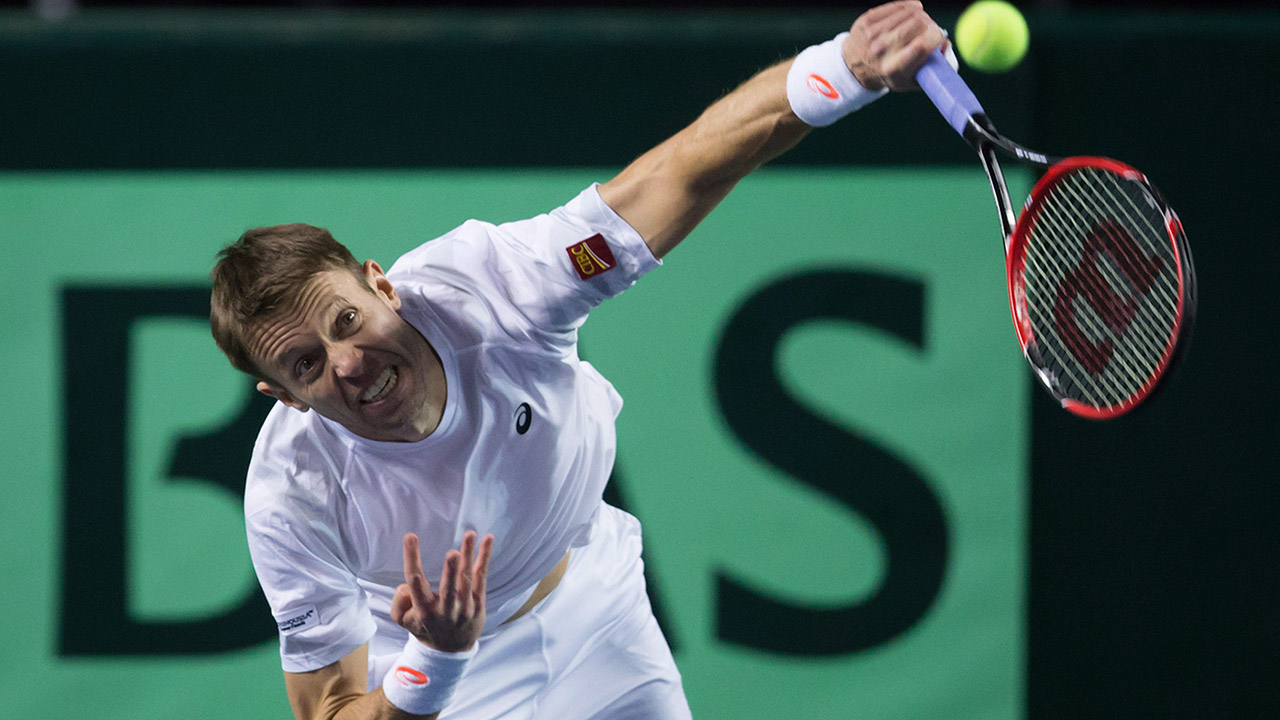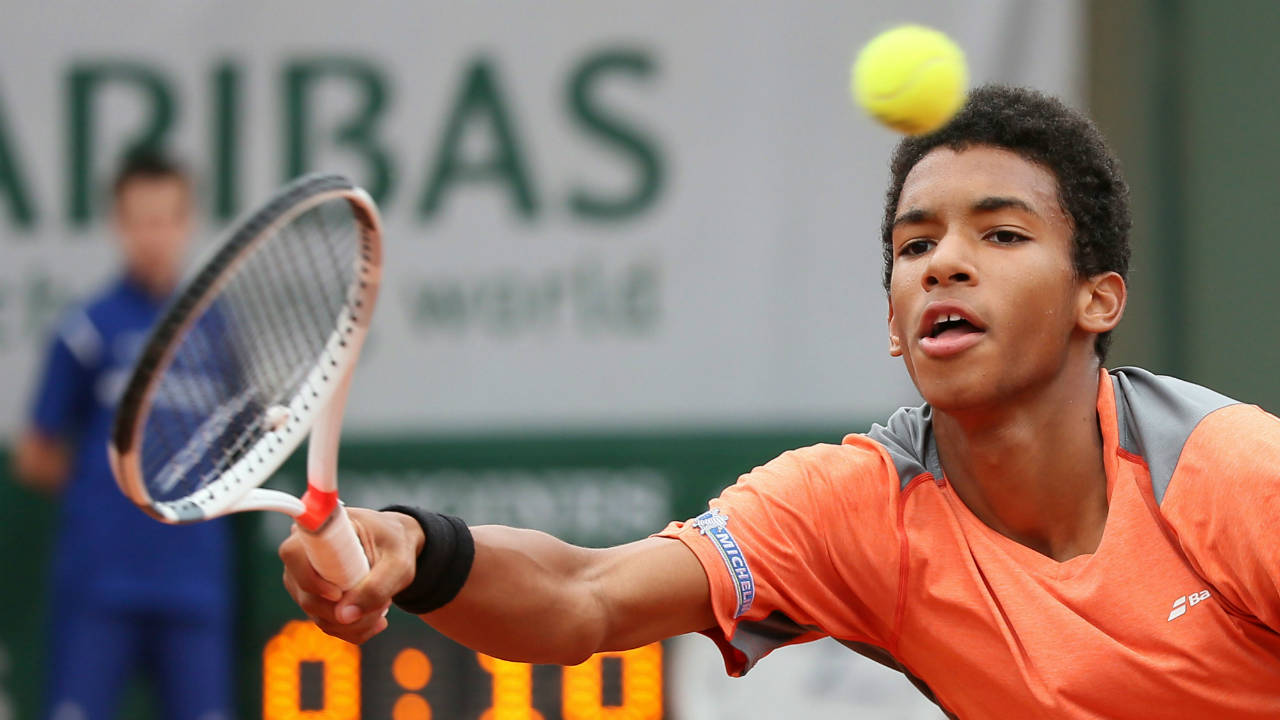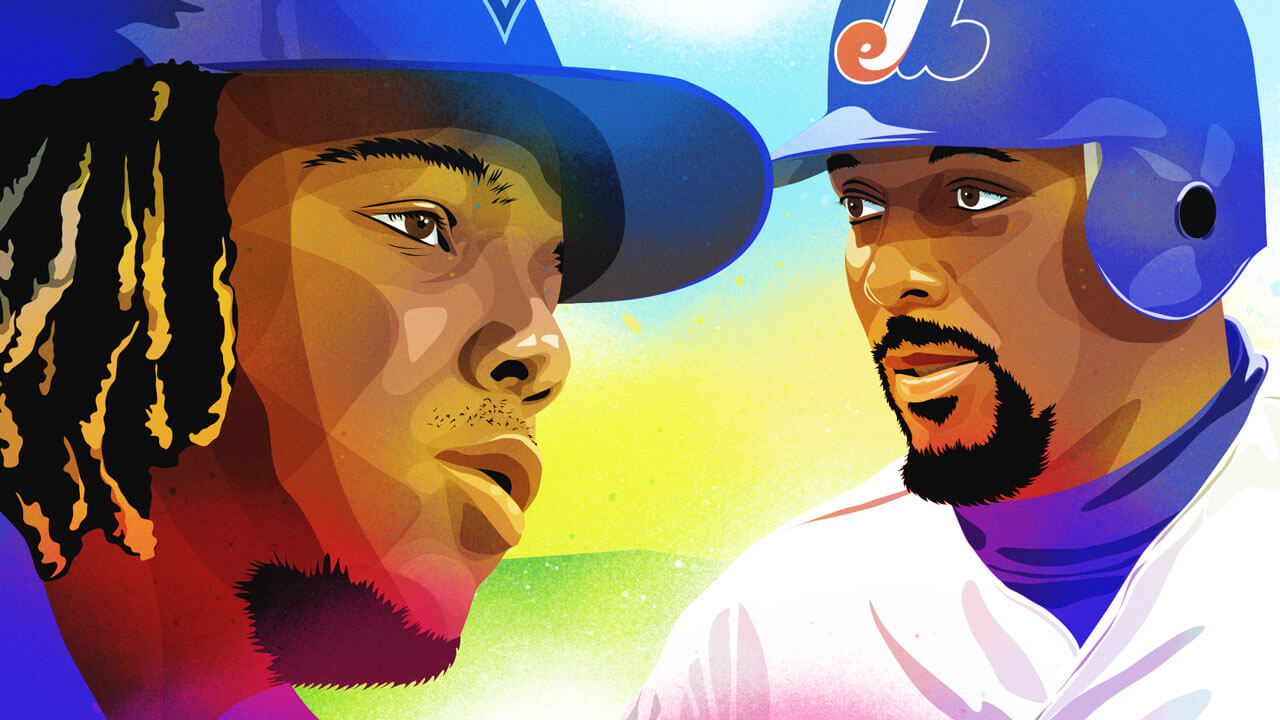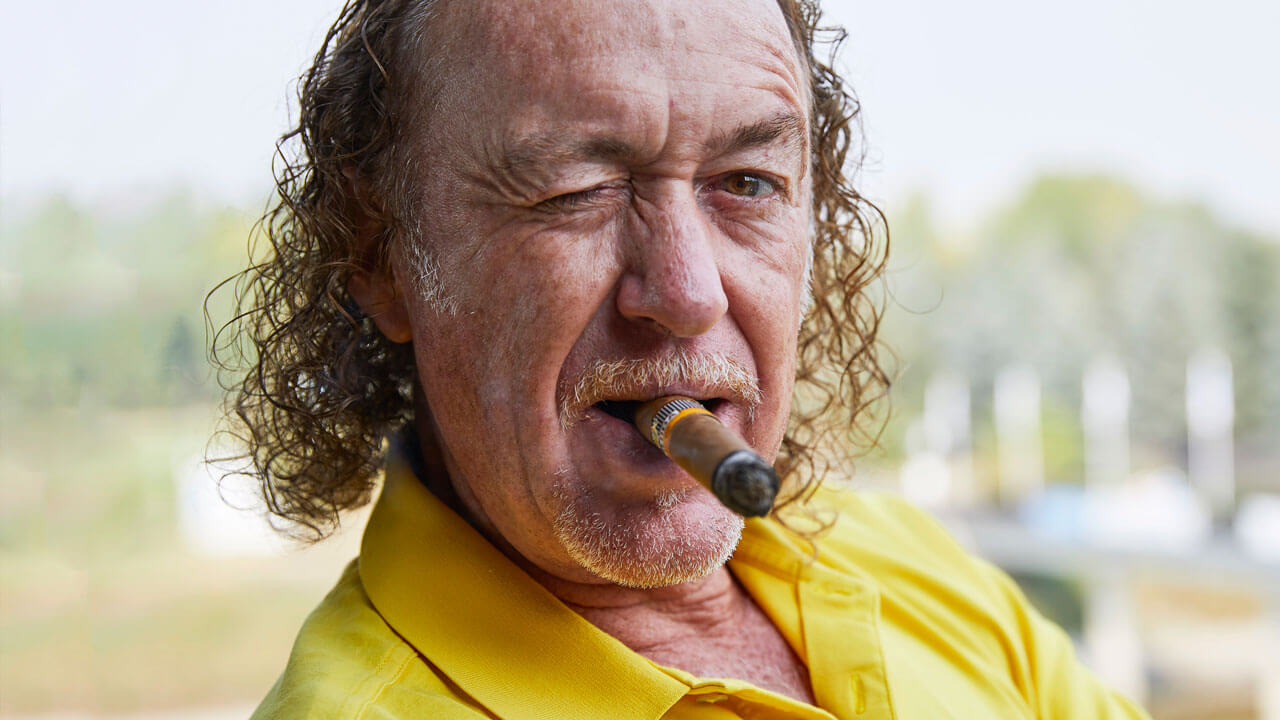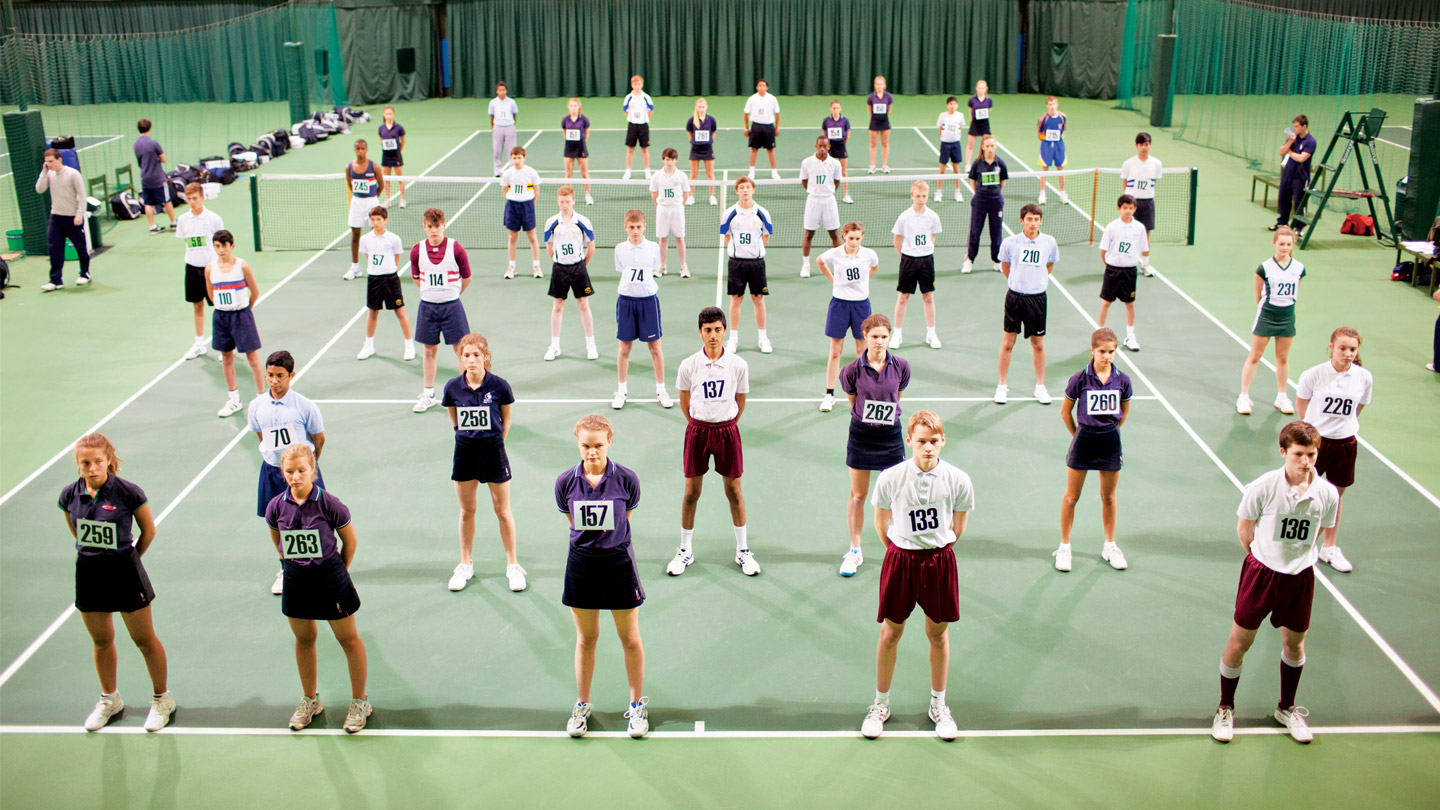The second wave of practice courts at the All England Lawn Tennis and Croquet Club might as well be in another area code from the spectacle that is Centre Court at Wimbledon 2018. From the perfectly manicured lawns tennis’s stars use to ready themselves, head down a flight of stairs, along a paved path and follow a gradual turn to the west. It’s there that you’ll find Daniel Nestor preparing for his opening match.
Wearing an aqua shirt, grey shorts and red tennis shoes, Nestor looks just as he has for years. His brown hair is a bit messy and spiked up in the front, and he flashes a big-toothed grin to accompany every self-deprecating one-liner. As for why he’s warming up so far from the stage on which he claimed back-to-back titles a decade ago, he has a simple explanation: “I don’t belong at the highest levels of the game with the way I’ve been playing.” Then he shows that grin.
Nestor’s resume makes him a lock for the International Tennis Hall of Fame: eight Grand Slam doubles titles, another four in mixed doubles, the 2000 Olympic gold medal and the distinction of being the first doubles player to win every Masters-level tournament and reach 1,000 victories.
But these days, the expectations are different. After being granted a wild-card entry into Wimbledon, Nestor and his Austrian partner, Jurgen Melzer, are underdogs to advance past their first match. He’s simply happy to be invited. Ranked 101st in doubles coming into the tournament, Nestor’s game is nowhere near where it was when he was in the sport’s upper echelon. Which is why the former world No. 1 plans to retire in September — after the Rogers Cup (his 30th) where he’s teaming up with Vasek Pospisil; after maybe one last US Open; and after a swan song at the Davis Cup, his 53rd time playing in the event in the past 26 years.
When he does, the 45-year-old Nestor will be closing the book on the most impressive Canadian tennis career ever, and this country will be losing a player who, though always calm and in control on the court, is one of the most competitive and driven to wear red and white.
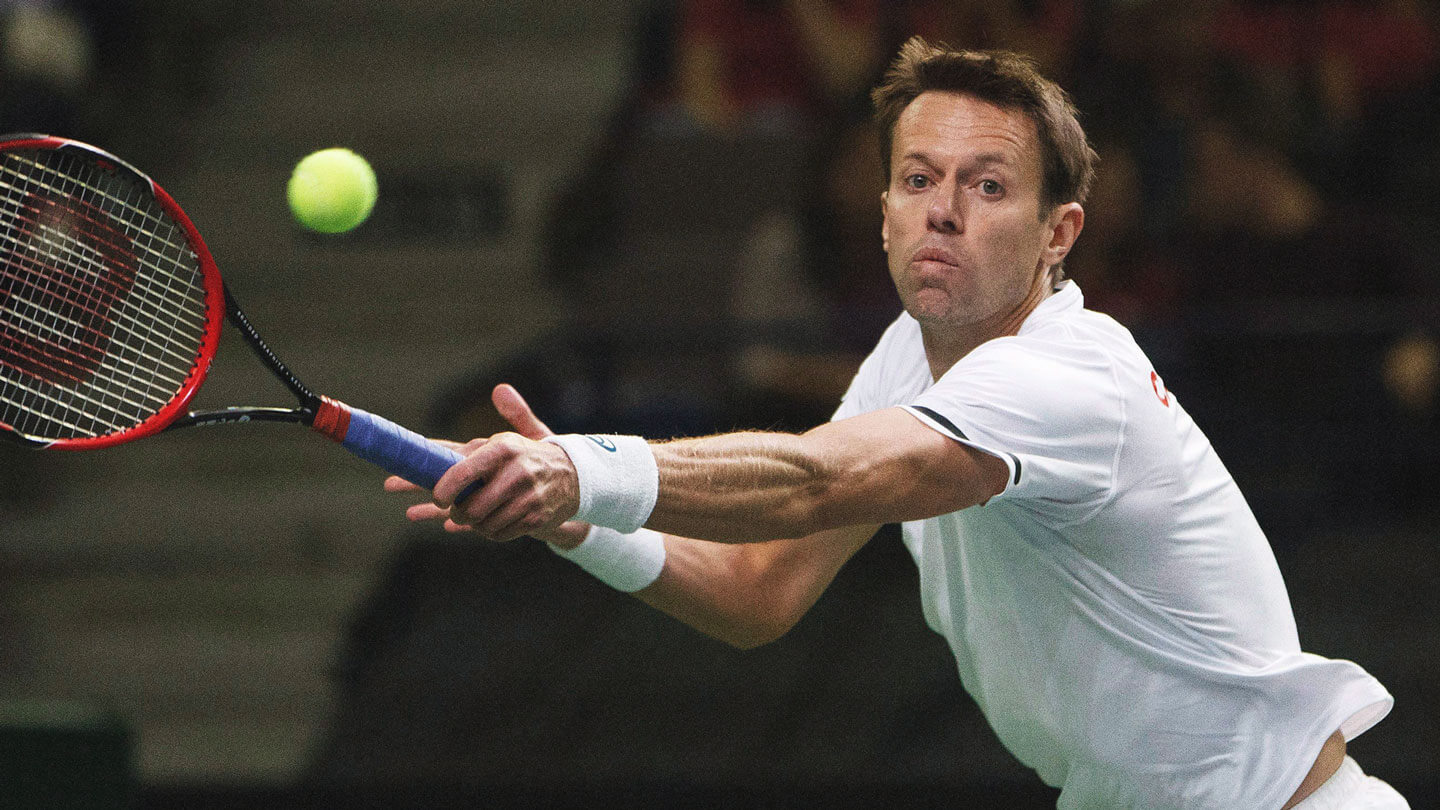
If there’s someone who’s known Nestor best during his more than a quarter century on the ATP Tour, it’s Mark Knowles. The two were doubles partners for the better part of 13 years, starting in September 1994 when Nestor’s father, Ray, registered his youngest son in a tournament in Bogota despite an injury and Knowles asked to play with him. Nestor and Knowles won the event and reached the final of the Australian Open four months later. Together they went on to win 40 tournaments — including three Grand Slams — and were one of the best doubles teams ever, first reaching No. 1 in 2002 after ending their singles careers to play together full time.
On the court, they were opposites: Knowles was the fiery one, the self-described leader who wasn’t afraid to yell at an umpire; Nestor was cool and collected, letting his serves and volleys do the talking. “I’m not a guy with a lot of energy that is bouncing all over the place. When I play a match, I’m trying to save my energy,” Nestor says.
Adds Knowles: “Daniel’s a relaxed, calm, serene guy who keeps everything inside — maybe a little more introverted. I always admired how cool Daniel was under pressure.”
As soon as matches ended, however, Nestor easily kept pace with his partner. “He likes to trash-talk,” Knowles says. “He’s like Floyd Mayweather on the practice court. If people don’t know him, they could take it the wrong way. But everyone’s got a pretty good handle on Daniel’s personality now. He’s a big prankster and joker on the practice court and in the locker room.”
It wasn’t just playing partners who felt his wrath. No one was immune. “When you get to practise with him, he’s in your face and he’s under your skin and he’s teasing you and he’s pushing your limits in the locker room, too,” says Martin Laurendeau, Nestor’s former coach and the longtime Canadian Davis Cup team captain. “He’ll come after you if he wants to, and you have no choice, you have to just sit there and take it. He’s one of the smartest guys. He’s really witty and he’s got a retort or argument for everything.”
From ping pong to billiards, fantasy hockey or football pools to pickup basketball games, Nestor is as determined to win as anyone. Pierre Lamarche, his junior coach and first Davis Cup captain, claims he once beat Nestor in a game of H-O-R-S-E. Nestor sunk the make-or-break shot, only to have a torn net spit up the ball. “I ran to the locker room right away. He’s yelling, ‘Come back here,” Lamarche recalls, laughing. “That’s the best thing I could do to get him upset. I know how competitive he is.”
As he’s inducted into the Canadian Tennis Hall of Fame, Nestor knows the ceremony will give his peers an opportunity to roast him. He’s already anticipating the barbs that’ll come his way. “They’ll talk about me being annoying in practice and yelling and screaming and then going on the court and not saying a word,” he says.
That wasn’t always his M.O.

Nestor was seven when his father brought home a racket and took him and his older brother, Alex, to the park on a Friday afternoon to swat some balls around. The youngest Nestor immediately found his sporting love — even if he wasn’t exactly fond of the quality of the two-dollar racket. “He was a bit disappointed, but he got over that,” Ray says, laughing.
The Toronto native was a shy child, so spending two hours every summer day whacking balls against the wall at Elkhorn Public School was his refuge. Much to his father’s surprise, he never got sick of it. “It seems like one of the more boring exercises, but he loved it,” Ray says.
Adds Nestor: “I spent a lot of time doing that because I wasn’t good enough to play with my dad and my brother.”
Ray and his wife, Anna, had immigrated to Canada with their kids from Belgrade in the former Yugoslavia when Daniel was four. They settled in a small apartment as Ray, a mechanical engineer, and Anna, a high-school English teacher, struggled to find work right away. That didn’t stop them from getting their boys involved in sports – something particularly important to Ray, who made a provincial junior basketball team as a centre and forward. Nestor tried soccer, basketball and hockey, before discovering that tennis was his game.
While pounding balls against the bricks, Nestor pretended he was fellow lefty Jimmy Connors, the gregarious American who was one of the top three players in the world at the time. Ray eventually convinced a summer tennis camp to let his young son register and, after that first taste of competitive play, Nestor joined the Bayview Village Tennis Club, situated right beside the family’s apartment. Though he never replicated Connors’s most zealous antics on the court — fist pumps and yelling at umpires wasn’t in the cards for the nonchalant Nestor — some of his hero’s influence did rub off in the form of questionable behaviour. So dominant was Nestor early on that he was often bored and either refused to take matches seriously or openly mocked opponents, Ray says.
That poor sportsmanship irked Lamarche, who refused to allow Nestor onto the junior national team until he changed his ways. Nestor was then an under-12 provincial finalist — near the top of the sport at his level — and still Lamarche and Ray frequently clashed. Ray compared his son to John McEnroe, who was the bad boy of tennis but also a winner. Lamarche wanted nothing to do with the first part of that equation.
When Nestor was 14, though, Lamarche agreed to let him join the All-Canadian Tennis Academy in Toronto. The coach pushed Nestor to adhere to a practice and workout schedule to keep him on track. He taught Nestor tactics as well, like the value of placing his serve close to the net on the sideline to force an opponent wide on the deuce court. He knew how to push Nestor’s buttons, too. “‘I don’t think you can do that. Only great players can do that,’” Lamarche would say of Nestor’s chances of pulling off a particular shot. “Of course, he’d show me right away that he could do it. He was so talented.”
The refined relationship between coach and athlete, and Nestor not wanting to leave home, contributed to him turning down an invitation from the Nick Bollettieri Tennis Academy in Florida when he was 17. Instead, Nestor continued to fine-tune his skills throughout his teens guided by Lamarche, who also had him undergo fitness testing at the University of British Columbia. One of the tests measured lactic acid build up using an incline treadmill, providing insight into one’s ability to endure pain. According to Lamarche, the tester described Nestor as “one of the toughest guys [he’d] tested, including all the Olympic athletes.”
That would soon be put to the test.
Nestor was 19 and less than a year into his pro career when he stepped onto the court for the match that first thrust him into the spotlight. The youngest member of Canada’s 1992 Davis Cup team — ranked 238th in singles play — he wasn’t the natural choice of opponents to face Sweden’s Stefan Edberg, who was then the best men’s singles player in the world and fresh off a berth in the Australian Open final. But for the second match of Day 1 in Vancouver, Lamarche made the decision that Laurendeau refers to as “one of the greatest captain’s joker-calls in the history of the Davis Cup for Canada.”
Lamarche felt he was making a calculated risk — Edberg had lost five times indoors in the previous two years to lefties, and the captain liked the fact that Nestor wasn’t intimidated by the matchup. Lamarche encouraged Nestor to step inside the baseline on Edberg’s serve, so he could take the ball early before the top spin had its desired effect. “It became obvious to me that the only way we could win [against Sweden] was by Daniel doing something different,” he says.
Edberg took two of the first three sets, one by the lopsided score of 6-1. Nestor’s serve wasn’t working to its usual standards, so rather than use the break before the start of the fourth set to rest, he hit a bucket of balls. He was able to iron out the wrinkles and stormed back to claim the last two sets. “His win against Edberg is one of the highlights of Canadian tennis forever,” Lamarche says. “I remember it was late at night in Vancouver. It was playing at the bars, so everybody saw it.
“When he won, he just hung his head and went and shook hands. That’s the way he was. He’s too cool.”
[snippet id=4071101]
But it was a match two days later that might have been more impressive, and a better showcase of Nestor’s determination. The victory over Edberg had taken its toll, leaving Nestor with a blood blister on the bottom of his foot. Lamarche consulted with team doctors and was informed no further damage would be done if Nestor played his next scheduled match — against slugger Magnus Gustafsson. He just needed a pair of needles; the first to draw out the clotted blood and then an injection to numb the area. “Just before the doctor came in, he was lying on the trolley,” Lamarche remembers. “And they came out with this huge needle because the needle had to go underneath the skin and pull out all the blood. And poor Daniel’s eyes rolled.”
Nestor toughed it out against Gustafsson, pushing him to a fifth set. That’s when the freezing wore off. In great pain, the Canadian dropped the decisive set 6-4. “It was an unbelievable, courageous performance,” Lamarche says. “I always believed in him, but from that point on I said, ‘This guy’s something special.’”
Despite the painful loss, the 1992 Davis Cup served notice that Nestor was an up-and-comer worth watching. The Edberg match gave him more confidence and incentivised the importance of proper training — something he hadn’t prioritized to that point, according to Laurendeau, who helped Nestor with his game before signing on to coach him in 1999.
For all Nestor’s doubles exploits later in his career, singles was the priority early on and his rise to the sport’s top tier was a slow and steady one. Laurendeau is quick to point out Nestor beat several former No. 1 players: Edberg, Thomas Muster, Andre Agassi and Australian Patrick Rafter at the 2000 Sydney Games. He’d later take down Chilean Marcelo Rios and Brazilian Gustavo Kuerten in five-set Davis Cup matches, too. “When he plays for Canada, he has an extra power,” his mother, Anna, says proudly.
Nestor reached No. 58 in August 1999, shortly after his best showing at a major — the fourth round at Wimbledon. But that’s as high as he’d climb in the singles rankings. Laurendeau felt his game was too “erratic” from the baseline and his court coverage was limited. “He had a lot of weapons, but there were a few holes,” Laurendeau says.
Nestor was forced off the court after undergoing arthroscopic surgery on his shoulder in 2000; the cause was his serve. The surgery ultimately impacted the pace he could put on the ball, limiting his ability to compete in one-on-one matches. “I had aspirations of doing as well as I could in singles until my body broke down in ’99, which was my best year in singles,” Nestor says.
While sidelined, his ranking plummeted to the point where he had to compete in qualifying events to get into main draws. Those matches overlapped with the later stages of doubles tournaments, so, in 2002, Nestor and Knowles reunited with a more singular goal. “He gave up on singles and focused on being the legend that he’s become from that moment,” Laurendeau says.
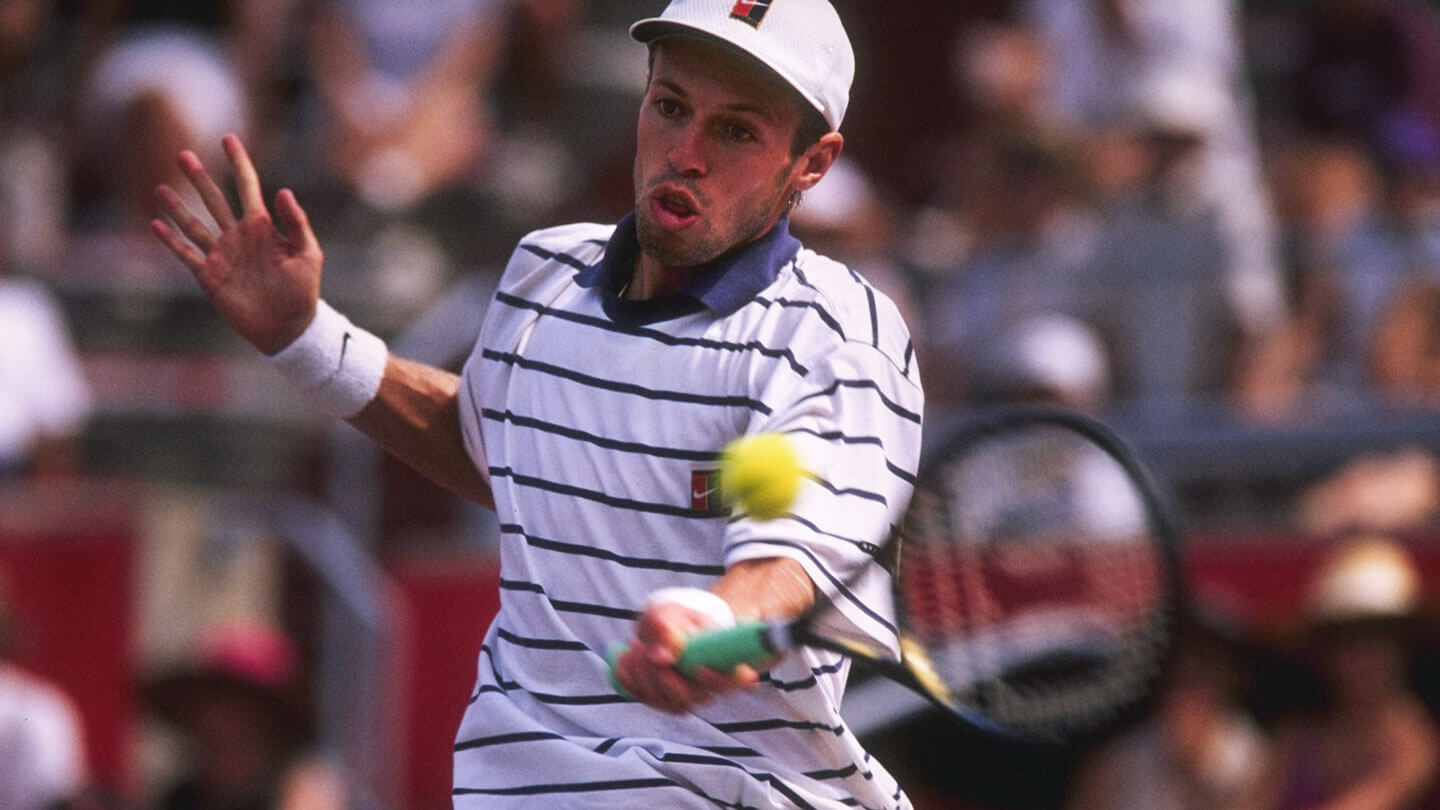
Along with his Olympic gold, Nestor considers his 2008 Wimbledon championship as one of his two greatest tennis achievements. Wimbledon was Nestor’s fourth major and allowed him to complete the career Grand Slam. It was also his first major win with new partner Nenad Zimonjic — the pair had teamed up that season and, after losing French Open final, broke through in London.
Joining the Serbian Zimonjic meant cutting ties with Mark Knowles, with whom Nestor had gone 3–6 with when a major title was on the line. “I wasn’t happy with the way I’d played in a few Grand Slam finals,” Nestor says. “My record wasn’t that good at that time.”
Even though they won the French Open and the year-end Masters in 2007, Nestor decided he and Knowles had reached their zenith. “Playing 10 years with Knowles got a little bit stale,” he says. “I don’t think we achieved what we should have achieved in Grand Slams; we won a lot of Masters, but we weren’t able to win enough Grand Slams. I just felt like we weren’t playing as well anymore.”
Knowles believes the true reason for the break was because he decided to focus on his family. (He and his wife, Dawn, had their first child, Graham, in 2005.) Ray says it was because Knowles’s serve wasn’t up to snuff and he wouldn’t hire a coach to improve it. Regardless of how you slice it, the split hurt Knowles and it took a few years for wounds to heal. “It was tough for me, there’s no doubt,” he says. “I thought we had built a bond and a friendship that was beyond tennis.”
“Doubles is an interesting place,” he continues. “It is a fairly cutthroat business. A lot of it is predicated on success. Daniel and I had such a high standard. Sure, we were still doing really well. But he wanted a little bit more. I don’t fault him for that.”
Nestor and Zimonjic won three major titles in total, taking Wimbledon again in 2009 and the French Open in 2010. Nestor claimed three straight French Opens after adding two more with Max Mirnyi. He also reached the 2016 Aussie Open final with Radek Stepanek.
Unsurprisingly, that success made him a coveted partner — to the degree that longtime rival Mike Bryan says he almost called on Nestor to join forces after his lefty brother, Bob, suffered a hip injury this past May. “It doesn’t matter who he’s playing with. He’s the common denominator,” says Bryan, who instead paired up with fellow American Jack Sock and won the 2018 Wimbledon title. “You don’t see talent like that very often. That’s why his credentials are so great.”
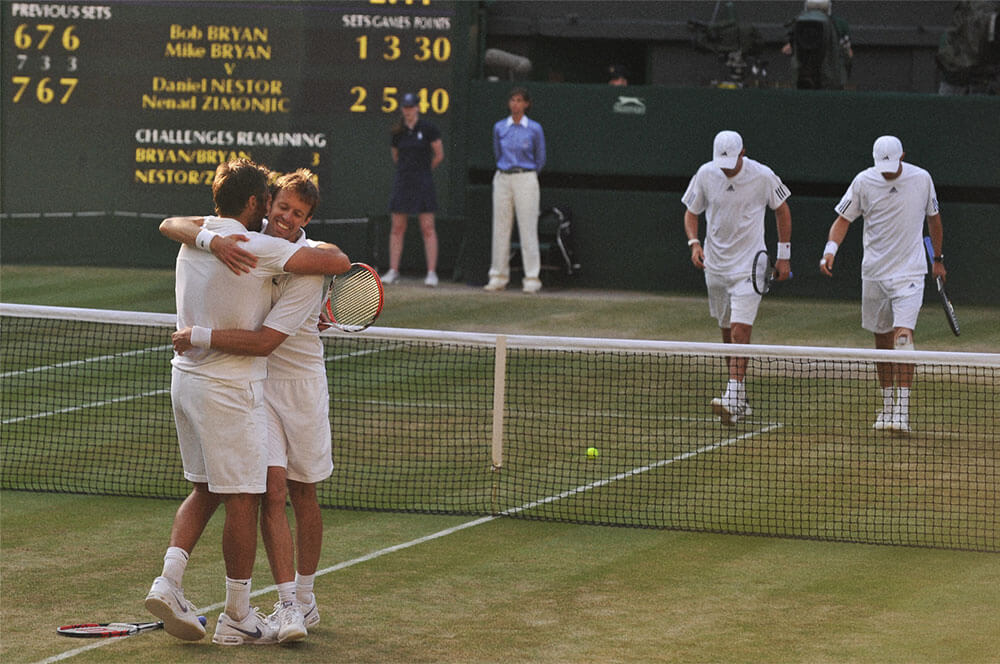
There wasn’t much fanfare for Nestor and Melzer’s opening-round match at Wimbledon this year against eighth-seeded Nikola Mektic and Alexander Peya. While Nestor showed off his reflexes early in the second set, lunging at the net to volley an intended passing shot from Mektic to save a break point, there weren’t many other highlights. His tried-and-true serve, which Bryan compares to a Randy Johnson pitch because it has so much “nasty slink and spin,” was broken twice. He and Melzer fell 6-3, 6-4, 6-4 in 90 minutes. “That’s the norm. The legs aren’t what they used to be,” Nestor said of his serve after the match. “It was just a couple games where I didn’t have first serves. Generally, I felt fine. But [Mektic and Peya’s] level was just one level better.”
All the loss did was push Nestor closer to the finish line. “It’s sad to see [Nestor’s career] come to an end, but every book closes,” Bryan says. “You can’t play forever.”
Few are more surprised than Nestor himself that’s he’s made it this far. On the eve of his last match at Wimbledon, he remembered a conversation he had in 2004 with his wife, Natasha, Knowles and Dawn. Surrounded by those closest to him, he joked that after all those years sitting through the rain, they’d never see the new roof of the All England Club, which was scheduled to be constructed over Centre Court in 2009.
Of course, he not only saw it, he won the tournament in the first year it was used. “I feel very fortunate to have played for so long,” Nestor says.
The rest of Canadian tennis shares the sentiment.

